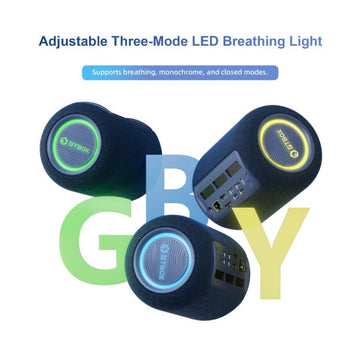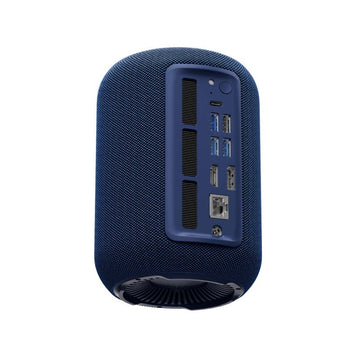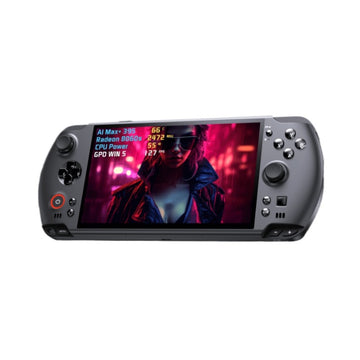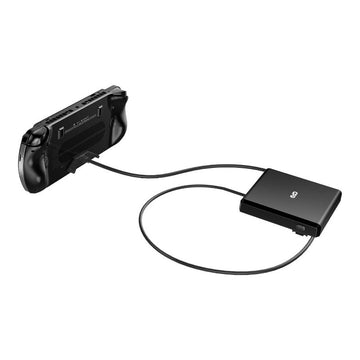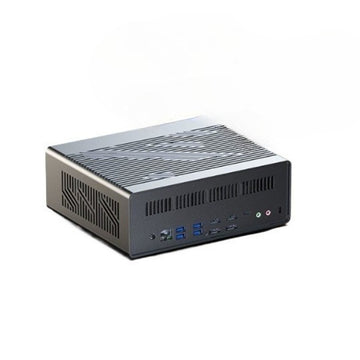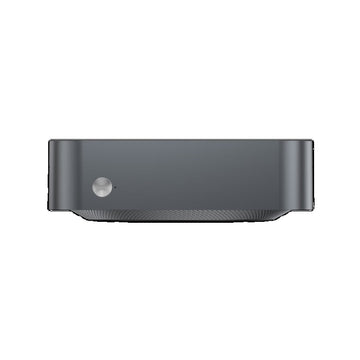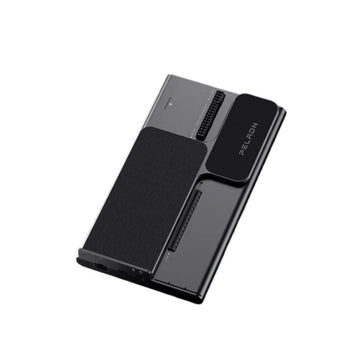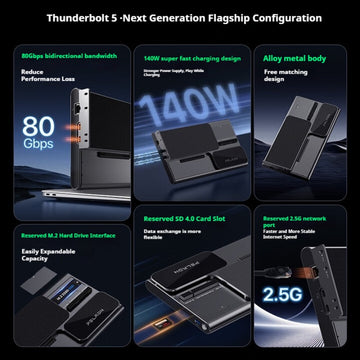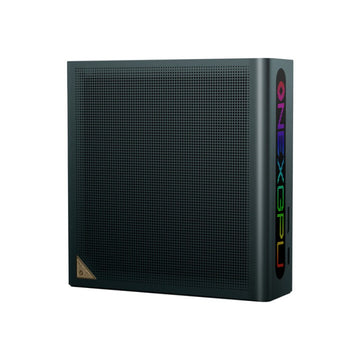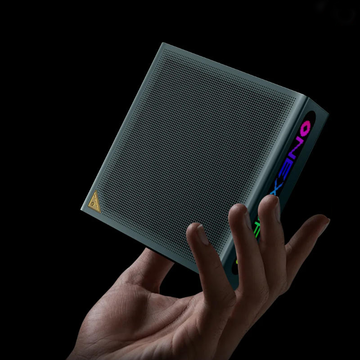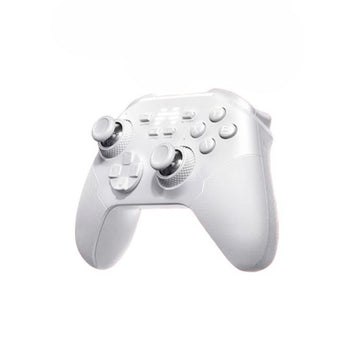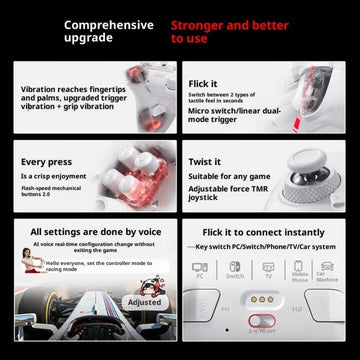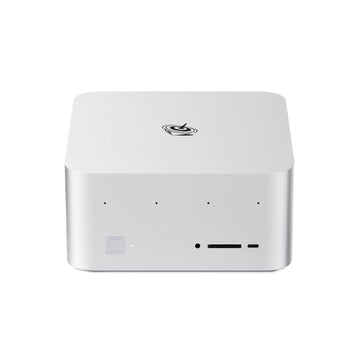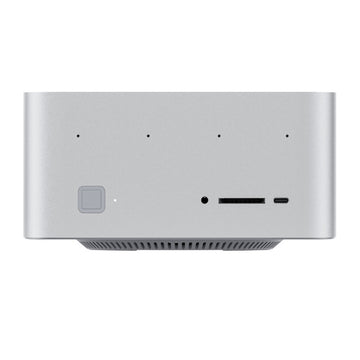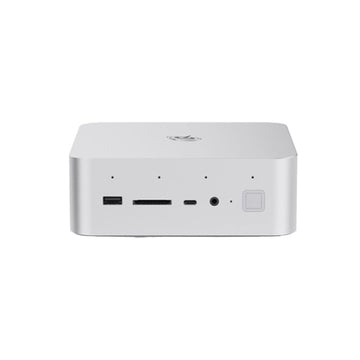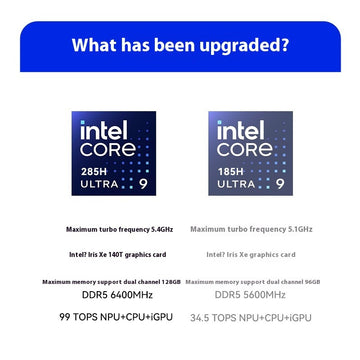Retroid Pocket 3 Hands-on Review - Retro Handheld For Emulation & Cloud Gaming!
When it comes to retro handhelds, the Retroid Pocket, referred to as RP, should be regarded as a clear stream. Although the product update and iteration speed is slow (does not play the horizontal and vertical version of the shell), each generation of products is still very distinctive. As the fourth machine in the series (the first three are RP, RP2, and RP2+), the Retroid Pocket 3 retro handheld actually started earlier than the RP2+. Pre-sale starts in August.
The RP 2+, which has been temporarily approved and upgraded, will be released first. In terms of SOC, the Unisoc Tiger T310 has been used on the RP2+ in advance, which makes the RP3 seem to lack a trace of sincerity. However, after two weeks of hands-on experience, I am still very satisfied with the workmanship and overall quality of the RP3. A good screen, improved key feel, and a lightweight body make it a good device for playing retro games. Meet and hate "late" should be the best evaluation of it. If it can reach the current level by the end of 2021, it will definitely be a popular model.
Unpacking and Design

In terms of packaging, Retroid Pocket 3 uses a white box. In addition to the RETROID pocket 3 LOGO printed on the front, there are color matching and memory capacity stickers on the side. At present, there are six official colors available: White, Gray Red (Retro), Gray Purple (16bit), Purple (Indigo), Yellow (Orange), and Black (Black). The storage part is divided into 2GB+32GB and 3GB+ 32GB two kinds.

Since the first batch of pre-sale is the 2GB+32GB version, in order to get started earlier, I chose the 2GB+32GB gray-purple (16bit) color scheme.

In terms of layout, the RP3 adopts a traditional double rocker symmetrical layout, but only the double rocker, cross keys, ABXY and microphone are placed on the front, and the traditional Select and Start keys are moved to the top of the machine. The front uses a 4.7-inch IPS screen with a screen resolution of 750*1334 and a nominal brightness value of 450nits. Seeing the size and special resolution, you should be able to guess that this screen is actually a product with the same specifications as the iPhone SE2.

The frame control of the screen is relatively good, the RETROID pocket 3 logo is tucked into the edge of the lower frame, and the overall shape is actually similar to a reduced version of NSL.

In addition to the Select and Start keys on the top of the fuselage, there are Micro HDMI interfaces and power keys, and the HDMI part supports 720P video output. Although the Select and Start of few machines are placed on the top, but because the body size is only 184.65 * 81.38 * 24.23mm, it is not inconvenient to press the START button with the right hand, but the Select button needs to release the right R1/R2 to press. However, considering that most of the games Select and Start are used very rarely, I personally think that the key arrangement of the RP3 is not a big problem.

The volume plus and minus and home (Home) buttons are placed on the left and right sides, and the daily holding posture is basically not touched, but there is a certain probability that the volume button will be accidentally touched when lying on the side with one hand.

The bottom of the fuselage is a TF card slot, a USB Type-C charging interface and a 3.5mm headphone jack. The nominal support for TF cards up to 1T, but most retro games are not large, and the daily use of 64~256G TF should be OK .
The button part is factory-made by default. Since I don't have RP2+, I personally think that the feel of the factory-made dome is quite satisfactory.

The L/R key has been given a full size this time, which is more convenient for daily use, but L2/R2 only provides digital mode. There is no linear trigger. If you stream some racing games, the scene that requires a linear trigger may not be possible. Wait for the next generation to upgrade.

The official provides conductive adhesive replacement parts for users to buy, but the buttons are only black by default, and other color matching partners may not have the motivation to replace them because of their appearance. And the feel of the dome chips is actually quite good at the factory. Personally, unless you are particularly sensitive to the feel of the keys, there is little point in replacing the conductive glue.

However, I have already started the kit, I still tried to replace it, let's see for yourself in terms of appearance

In fact, I personally have never been a superstitious conductive glue or dome. The feel of the buttons is actually related to the overall design. After the replacement, I personally feel that the ABXY’s pressing feel has indeed improved to a certain extent. However, in terms of the cross keys, the personal feel of the dome is better. Considering that most of the color ABXY is not black, it is not meaningful to replace the conductive glue in terms of appearance. The factory dome keys feel really good enough.

Although 4.7 inches is relatively large in retro handhelds, in fact, compared with PSV and NSL handhelds, the size of the RP 3 is actually very high in grip. In particular, the weight of the whole machine is only 230 grams. Considering that the current mobile phone generally weighs more than 170 grams, and the stretch handle is generally 100 grams+, the RP3 is relatively light.

A sticker is provided as standard at the factory, so the actual weight measurement is the weight of the machine + sticker. In order to find a reference, please go out for a long time PSV1000 (the same sticker). The measured weight of PSV1000 is 265 grams, and the weight of RP3 with film is 241 grams, which is lighter than PSV1000. I believe that even small screen parties should be able to accept it.
Display

The screen part of the RP 3 has made great progress. The PPI of this 750*1334 split-screen IPS screen is 325.6, the maximum brightness has been increased to 450nits+, and the darkest can also be dimmed. The picture below shows that the brightness of PSV 1000 and RP 3 is adjusted to the lowest level, and there is no stroboscopic problem in the dark environment. This iPhone SE2 screen with the same specifications should have a very good experience in the current retro handheld.

Of course, the best way to judge the quality of the screen is to use an objective test. Here we use Datacolor's Spyder X Elite. Since the film has been attached, the measured minimum brightness (reflectivity) may be higher than the actual one.

In the color gamut part, in the native mode of this LCD screen of RP 3, the test covers 92% of the sRGB color gamut and 69% of the DCI-P3 color gamut. Considering that the specification of this screen was defined earlier, it is expected that it does not cover a wide color gamut. If the red part is adjusted, I believe it is easy to solve the 99% sRGB color gamut.

In the standard mode, the measured luminosity curve is 2.1, which is higher than the standard 2.2. The fluctuation range of the color temperature is relatively large. It seems that the factory has not been calibrated for the white point, and the default color temperature is relatively cold.

In addition, according to the first batch of users who got the machine, it seems that the RP 3 should have two color temperature screens, one is warmer and the other is cooler. The screen I have is a relatively cool type. In the standard mode, the maximum brightness is 560nits, the minimum brightness is 0.51nits, and the contrast ratio is 1090. The color temperature of the white point is too high. The actual measurement is 21600K, which is much higher than the standard 6500K. It is recommended that if you get a screen with a cool color temperature, you can adjust it to a warm color in the display settings.

In warm color temperature mode, the maximum brightness reaches 497nits, which is still higher than the nominal 450nits. However, the contrast ratio is slightly reduced to 920, and the color temperature of 14900K is still a bit high.

In terms of color accuracy, the screen performance of the RP 3 is still good. The Macbeth 48 color average color difference is 1.93, and the maximum color difference is 7.71. It would be better if the white point color temperature can be controlled around 6500K.
Simple Disassembly

Since the conductive glue button needs to be replaced, it is easy to disassemble the machine to see how the internal workmanship is. First, unscrew the four screws on the back, and use the plastic warping sheet to scrape the gaps along the four sides to separate the front and rear covers. The screen, buttons, joystick and one side of the motherboard are covered with a superimposed black aluminum sheet, and a complete black heat sink is attached to the back part. Although there is no fan, there are two air inlet and outlet positions on the back, and black dust filters are attached to them.

Unscrew the four screws around the black back cover to see the battery and motherboard. The standard battery is 3.8V 4000mAh (15.2Wh).

The SOC, RAM, and ROM of the motherboard are all placed under the shield. In order not to damage the machine, the shield will not be removed here. From the perspective of the internal structure, the left and right small plates and the rocker can be replaced independently, and the later maintenance is relatively convenient. However, the cables on the left (ABXY side) small board and rocker are relatively compact, so you need to be careful when replacing parts.

The main components of the RP 3 are covered by a shielding cover, which increases the cost, but is of great help in anti-signal interference. In addition, from the perspective of the heat dissipation structure, the current design actually leaves a lot of margin. The black cover plate is thickened and the silicone grease covers the shield, and there is an opportunity to upgrade the SOC with stronger performance in the later stage.
Benchmarks and Performance Tests

The SOC part of the RP 3 uses the Tiger Ben T310 from Ziguang Zhanrui. In fact, this SOC is still very competitive at the end of 2021. At that time, the price of around 800 was still very empty. In a bunch of RK3326 shell changers, the T310 is also very good. Can hit. However, since RP 2+ has released this T310 in advance, the performance of the simulator can basically refer to the test results of RP 3+ (there are many videos in Xiaopo Station, you can search it), the approximate degree is as follows:
- Basically perfect platforms: GBA, NDS, NeoGeo arcade and older platforms
- Most of the perfect platforms: PSP, PS1, N64, DC, etc.
- Partial/small number of playable platforms: NGC, PS2
First, test the streaming performance that everyone cares about. Using moonlight+GTX1070, the difference in shooting time between H264 and the host display screen at 720P 10M bit rate is about 30~70ms. The network delay part is 4~6ms, and the average decoding time is about 27~28ms.

If HEVC (H265) decoding is forced to be used in moonlight settings, the difference between the shooting time of the host display at 720P and 10M is about 30~40ms. The network delay part is still 4~6 ms, and the average decoding time is about 6.5 ms. From the perspective of screen shooting delay and decoding speed, the performance of T310 under HEVC will be better, but the difference between H264 and HEVC in actual streaming games is not much. As a streamer, the RP 3 has no issues with latency, network stability, and operation, though the 4.7-inch screen may be a little too small for streaming PC games.

Unisoc Tiger T310 adopts 12nm process, and the performance in terms of energy consumption ratio is classed. The CPU part is a relatively rare 1+3 architecture. The large core adopts 1*Arm Cortex A75 @2.0Ghz, and the small core part is 3*Arm Cortex A55 @1.8Ghz, which makes its single-core part lead many SOCs with 8*A55/A53 structure (such as Snapdragon 625) , but the multi-core part may be countered by many 8-core chips (such as Snapdragon 625). The GPU part is PowerVR GE8300 with a main frequency of 800Mhz, and the storage part supports 2*16bit LPDDR3/LPDDR4/LPDDR4x, eMMC5.1.


In the Geekbench 4 running points, the large-core A75 can run up to 1673 in single-core and 2950 in multi-core. Geekbench5 single-core running score is 373 points, multi-core 729 points. For comparison, the Snapdragon 625 Geekbench4 single-core running score is around 1300, and the multi-core running score is around 3100. The T310 single-core is stronger than the Snapdragon 625, and the multi-core is weaker than the Snapdragon 625.

In the storage part, Androbnech reads 279.64MB/s sequentially, writes 103.59MB/s sequentially, reads 39.75MB/s for random, and writes 66.42MB/s for random. However, at present, the RP3 is only available in 2GB+32GB and 3GB+32GB versions. Although some eMMC speed performances are acceptable, the 32GB capacity may limit the number of Android games/APPs installed.

In the comprehensive running points, the total score of Entertainment Rabbit is 162239, the CPU single item is 56997, and the GPU single item is 12508.
Conclusion
When I see that the RP 3 and RP 2+ use the same SOC, I believe that many users who are related to the retro handheld circle will have a sense of disappointment in the face of squeezing toothpaste. However, after learning that Retroid Pocket 3 has been delayed for nearly a year, maintaining the SOC unchanged may be just the project itself.

Compared with the RP 2/RP 2+, there are still many improvements in the RP 3 hardware. The better screen, higher screen ratio, and buttons are all real improvements (and also upgraded to Android 11). The workmanship is also first-class among retro handhelds, and the overall structure is also easy to maintain. It is also possible to replace the motherboard in the later stage to obtain a hardware upgrade with stronger performance (similar to RP 2 → RP 2+). RP3 Launch, which is specially made for Android, has been unveiled on RP 2+ ahead of time. The more convenient ROM and cover import methods can also be regarded as providing a basis for differentiation. If you can further optimize the settings, configuration, and provide some customizable themes in the later stage, I believe it can meet the needs of more different types of users.
If you don't have a retro handheld, then the RP 3 is actually worth buying. The lightweight body and good feel make it very suitable for simulating some old games. Relying on the Android platform + T310 SOC, the experience of mild Android games (Stardew Valley, Horn of the Sea, etc.) is also quite good, and it can also support PC/PS/XBOX streaming. Even for the retro simulator Xiaobai, using the pony simulator or the Aiwu game treasure box, it is basically possible to get started and play.
Of course, if you are already an RP 2+ user, it is debatable whether the same SOC and similar configurations need to be upgraded. If you have a higher pursuit of performance, the Odin Lite/Pro with a higher price that will be fully stocked may be your dish, or you can wait and see if the RP 3+ can meet your needs.

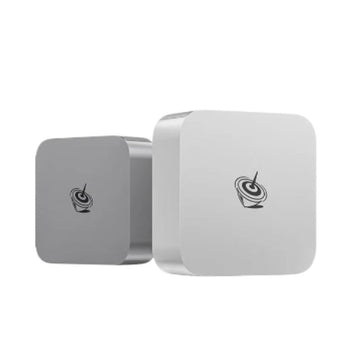
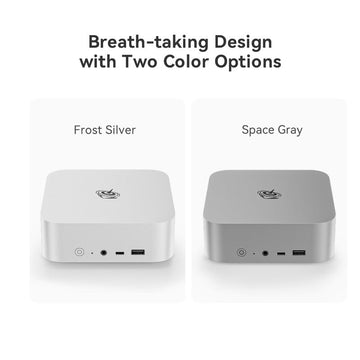
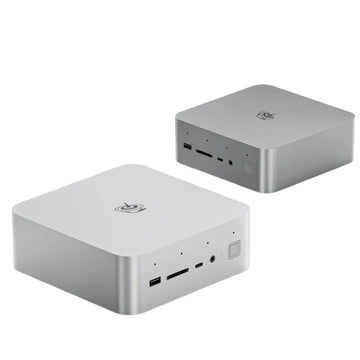
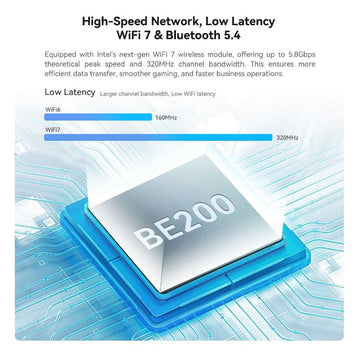
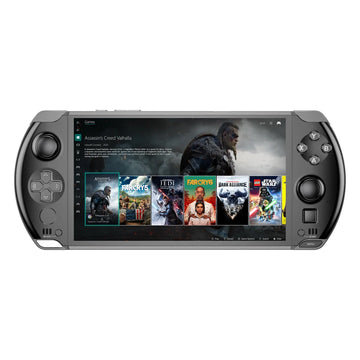
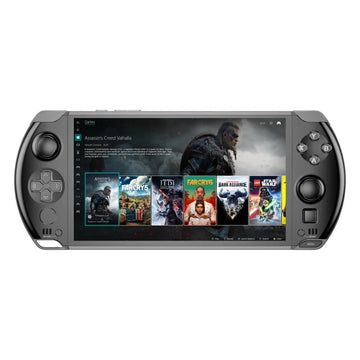
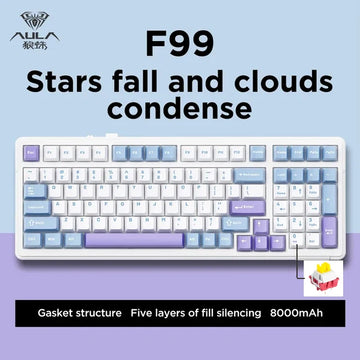
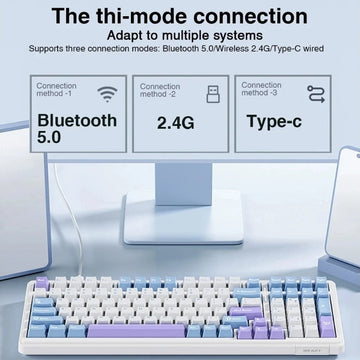





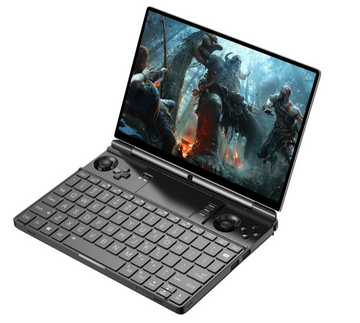

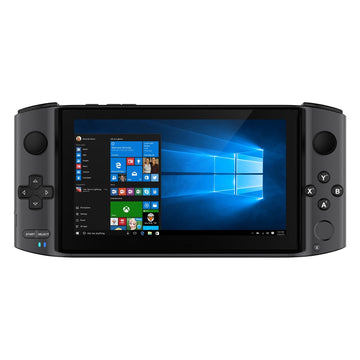
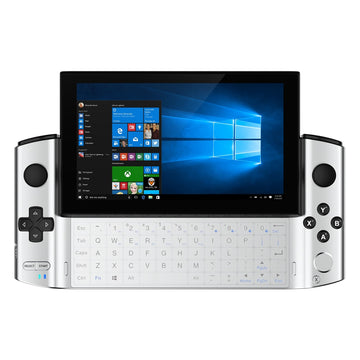
![[US Warehouse]Flydigi Vader 5 Pro Dragon Ball Limited Edition Game Controller](http://minixpc.com/cdn/shop/files/2bf62a4b1011cdf0b5088de9d5ad663d_360x.jpg?v=1763001514)
![[US Warehouse]Flydigi Vader 5 Pro Dragon Ball Limited Edition Game Controller](http://minixpc.com/cdn/shop/files/0944bf12c40c5bcaf5bc45c2a2f0b9e0_360x.jpg?v=1763001514)


